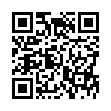Removing Photos from iPhoto
Despite iPhoto's long history, many people continue to be confused about exactly what happens when you delete a photo. There are three possibilities.
If you delete a photo from an album, book, card, calendar, or saved slideshow, the photo is merely removed from that item and remains generally available in your iPhoto library.
If, however, you delete a photo while in Events or Photos view, that act moves the photo to iPhoto's Trash. It's still available, but...
If you then empty iPhoto's Trash, all photos in it will be deleted from the iPhoto library and from your hard disk.
Written by
Adam C. Engst
Recent TidBITS Talk Discussions
- Alternatives to MobileMe for syncing calendars between iPad/Mac (1 message)
- Free anti-virus for the Mac (20 messages)
- iTunes 10 syncing iPod Touch 4.1 (2 messages)
- Thoughts about Ping (16 messages)
Published in TidBITS 867.
Subscribe to our weekly email edition.
- Security Update 2007-002 Squashes MoAB Bugs
- Early Help Desk Video
- Daylight Saving Time Saved
- Microsoft Releases Office 2004 11.3.4 Update
- Final Cut Pro 5.1.3 Update Released
- DealBITS Winners: Rogue Amoeba's Fission
- DealBITS Drawing: A Sharp's Opal
- Create Permanent Links to the New York Times
- MoAB Is My Washpot
- InterviewBITS: Key Apple Technologies
- Take Control News/19-Feb-07
- Hot Topics in TidBITS Talk/19-Feb-07
Google Gmail Open to All
Google has at last opened up its well-regarded Gmail email service to all comers, eliminating the need to receive an invitation from an existing user before signing up. It's been two years since the service launched, and it's still branded beta. The primarily Web-based Gmail remains free to use and currently offers over 2.5 GB of storage for each user, an amount that grows every day as Google brings more storage online.
Gmail provides POP3 access for people who prefer using traditional email clients over the Gmail Web interface, but still lacks IMAP, a popular alternative to POP3. The service has good spam filtering that accepts reports from its users, attachment viewing within the Web interface, and support for mobile phone email - you can read and reply to messages. Google Talk, the company's instant messaging and voice chat program, can be used within the Web interface, too.
Gmail can also forward incoming mail to another email address, send messages and replies using another return address, and fetch mail from up to five other non-Gmail accounts via POP.
What sets Gmail apart from other email services and clients is how rapid-response searches sit at the core of message archiving and organizing. Instead of filing messages in a folder, you apply one or more labels to incoming messages that exist in a general archive. The labels are the search equivalent of folders, and show up in a list in the left navigation bar. It's very much like the Smart Mailboxes feature in Apple Mail, only faster. You can also search quickly through your entire message archive; Gmail provides a list of matches with search terms highlighted, and messages threaded across an entire set of conversations so you can easily follow what was said and by whom.
Gmail funds itself through what text ads that are theoretically relevant to the content of the message you're reading - a behavior that can be a little disconcerting. The ads are never inserted into the body text of either incoming or outgoing mail, however, unlike free mail from other firms.
Since I run my own mail server, I have only dabbled with Gmail. But reports from friends and colleagues who rely entirely on the service are highly positive, with them experiencing minimal downtime and speedy access. The main reason I haven't looked more seriously at Gmail is that I already have 2.3 GB of stored email, and I don't want to lose access to that archive. Gmail does enable import of contacts to provide access to laboriously created address books.
(The only way to import mail into Gmail that I can see is to redirect to the Gmail account, which isn't practical with hundreds of thousands of messages. Although utilities like Mark Lyon's free Google GMail Loader and Cheah Chu Yeow's free gExodus exist to automate the process, date stamps are lost in the transfer, rendering them useless for an email archive that spans 15 years.)
Because Gmail is an extremely interactive Web application, it works only in a subset of common Web browsers, including (all version numbers are the earliest supported version) Safari 1.2.1, Firefox 0.8, Mozilla 1.4, and Netscape 7.1. Web-based chat requires Firefox 1.0 or later. Gmail does offer a basic HTML view for other browsers, but, honestly, there's not much point in using Gmail if you can't take advantage of the full interactive interface.
If you've been looking for another email service, it's worth giving Gmail a try. You can even set up multiple addresses using your own domain using the Google Apps for Your Domain service. In particular, if you've been having trouble receiving TidBITS due to overactive spam filtering or other delivery problems, Gmail could be a good alternative. (Our new bounce processing code sends you warnings when your account has bounced too many messages, and you can manage your subscriptions and addresses with our new Manage Mailing List Subscriptions interface.)
 Get more productive with software from Smile: PDFpen for
Get more productive with software from Smile: PDFpen forediting PDFs; TextExpander for saving time and keystrokes while you
type; DiscLabel for designing CD/DVD labels and inserts. Free demos,
fast and friendly customer support. <http://www.smilesoftware.com/>

